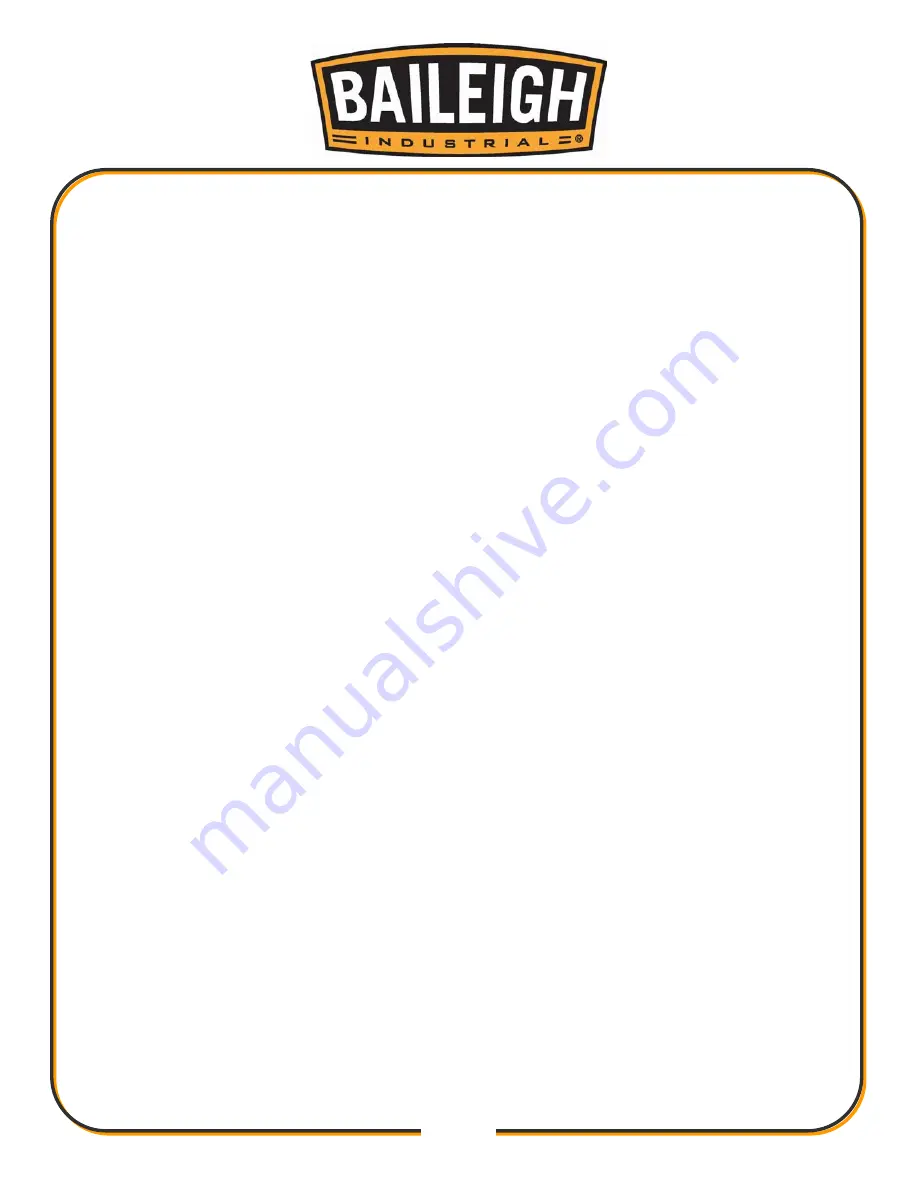
7
7
2.
Only trained and qualified personnel should operate this machine.
3.
Make sure guards are in place and in proper working order before operating
machinery.
4.
Remove any adjusting tools.
Before operating the machine, make sure any adjusting tools
have been removed.
5.
Keep work area clean.
Cluttered areas invite injuries.
6.
Overloading machine.
By overloading the machine you may cause injury from flying parts.
DO NOT
exceed the specified machine capacities.
7.
Dress appropriate.
DO NOT
wear loose fitting clothing or jewelry as they can be caught in
moving machine parts. Protective clothing and steel toe shoes are recommended when
using machinery. Wear a restrictive hair covering to contain long hair.
8.
Use eye and ear protection
. Always wear ISO approved impact safety goggles
9.
Do not overreach
. Maintain proper footing and balance at all times.
DO NOT
reach over or
across a running machine.
10.
Stay alert
. Watch what you are doing and use common sense.
DO NOT
operate any tool or
machine when you are tired.
11. Check for damaged parts. Before using any tool or machine, carefully check any part that
appears damaged. Check for binding of moving parts that may affect proper machine
operation.
12. Observe work area conditions. DO NOT use machines or power tools in damp or wet
locations. Do not expose to rain. Keep work area well lighted. DO NOT use electrically
powered tools in the presence of flammable gases or liquids.
13. DO NOT bypass or defeat any safety interlock systems.
14. Know the location of the ON - OFF switch and the “E”- STOP button.
15. Keep visitors a safe distance from the work area.
16. Keep children away. Children must never be allowed in the work area. DO NOT let them
handle machines, tools, or extension cords.
17. DO NOT operate machine if under the influence of alcohol or drugs. Read warning labels on
prescriptions. If there is any doubt, DO NOT operate the machine.
18. DO NOT touch live electrical components or parts.
19. Be Sure all equipment is properly installed and grounded according to national, state, and
local codes. If machine is equipped with a three-prong plug, it should be plugged into a
three-hole electrical receptacle. If an adapter is used to accommodate a two-prong
receptacle, the adapter plug must be attached to a known ground. Never remove the third
prong.
Summary of Contents for DC-1650B
Page 22: ...20 20 EXPLODED DIAGRAM...







































